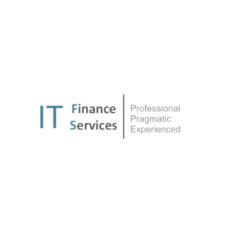10th anniversary of IT Finance Services – State of the industry thoughts and our ambitions for the coming year(s)
It’s been quite the journey since I first stepped into the legal tech world back in July 1985, starting as a customer support rep at Miles 33 and then from TimeSlice to Admiral Legal, and eventually transitioning to an independent contractor in 1998, every step has been enriching. The experiences and friendships forged during those early years have been invaluable.
Ambitions
As I celebrate my 67th birthday and our anniversary, we have been proactively evolving our service-oriented business to focus on generating consistent revenue streams. The introduction of LawFabric twelve months ago represented a pivotal development in this strategy, and the acquisition of our inaugural client has proven to be a gratifying achievement. We are dedicated to establishing and nurturing strategic partnerships and alliances with reliable vendors and colleagues, aiming to create a supportive network conducive to mutual assistance and referrals as needed. The emphasis on collaboration underscores our belief in the importance of reciprocal support, with the ultimate aim of facilitating collective advancement.
Product
LawFabric represents a state-of-the-art, customizable intranet SaaS solution for law firms. It is a business intelligence platform with an extensive suite of pre-configured applications, providing law practices with a modular toolkit encompassing client matter intelligence, financial analytics, dynamic dashboards, and robust data analysis functionalities. This comprehensive approach enables law firms to harness the power of data-driven insights for enhanced decision-making and operational efficiency.
Adoption of new systems, considering upgrades, or making a shift towards cloud computing?
From my viewpoint, it’s imperative for providers to emphasize unwavering support across the full spectrum of the client experience. It’s not uncommon to observe firms enlisting consultancy assistance either for upgrading to an advanced version of their current technology or in the process of selecting a fresh system, only to find themselves bereft of continued support through the implementation phase. This phase can pose significant challenges, particularly as clients face intricate choices related to system configuration and data migration. Our role is pivotal at this juncture – we utilise our expertise to steer clear of potential obstacles and ensure smooth transitions.
The Cloud
When discussing the transition to cloud computing, it’s critical to challenge the misconception that it’s merely a swift “lift and shift” operation. The true nature of cloud migration involves a thorough reimplementation process, which requires ensuring compatibility with up-to-date versions and tackling the intricacies of data integration. Such complexities necessitate strategic planning to mitigate any potential disruptions and to uphold the expected levels of performance.
Legal entities are bound by stringent regulatory requirements and are custodians of sensitive information, making the shift to the cloud a delicate endeavor. It’s not just about moving data and applications from on-premises servers to a cloud environment. It involves a comprehensive evaluation of legal technology applications to ensure they are optimised for cloud infrastructure, addressing any compatibility issues with newer software versions, and integrating disparate data repositories to ensure seamless access and analysis.
Moreover, the process demands a proactive approach to cybersecurity, given the legal sector’s attractiveness as a target for cyber threats. The cloud migration strategy must incorporate advanced security measures to protect against data breaches, unauthorized access, and other cyber risks. This underscores the importance of choosing cloud service providers that not only offer robust security features but also understand the unique compliance obligations of the legal industry.
On-premise configurations facilitate easier integration with external systems like document management (DMS), customer relationship management (CRM), and human resources (HR) platforms. Nonetheless, achieving similar levels of integration in cloud environments introduces distinct challenges. Providers are actively working to navigate the complexities of managing system administration permissions, adhering to security standards, and complying with regulations, all while striving to maintain uninterrupted connectivity. The process encompasses everything from establishing Active Directory accounts to enabling database customisations, necessitating a concerted effort from all involved parties to guarantee a seamless migration.
This transition highlights the evolving landscape of legal technology integration, where the shift towards cloud-based solutions is met with both enthusiasm and caution. In the context of the legal sector, where data sensitivity and regulatory compliance are paramount, the move from on-premise to cloud systems underscores a critical balance. Law firms and legal departments must weigh the immediate benefits of enhanced collaboration and accessibility against the long-term considerations of data sovereignty, privacy, and the complexities of cloud integration.
In summary, the transition to cloud computing in the legal sector is a complex, multifaceted process that extends well beyond the simplistic notion of “lift and shift.” It requires meticulous planning, a deep understanding of the latest technology advancements, and a strong emphasis on cybersecurity and compliance. For law firms and legal departments embarking on this journey, the focus should be on leveraging the cloud to enhance their service delivery while safeguarding the confidentiality and integrity of the information they hold.
Conclusion: The ITFS bridge
ITFS is the bridge linking the strategic ambitions of law firms with the complex technical knowledge held by vendors and developers.
Our role involves offering services for integration of the disparate systems into one unified environment. deciphering the business requirements and enhancing the dialogue between all parties, thereby accelerating the completion of projects within the allocated time frame and budget. This facilitation not only serves the interests of both sides but also paves the way for efficient solution deployments and quicker revenue realization for vendors.



